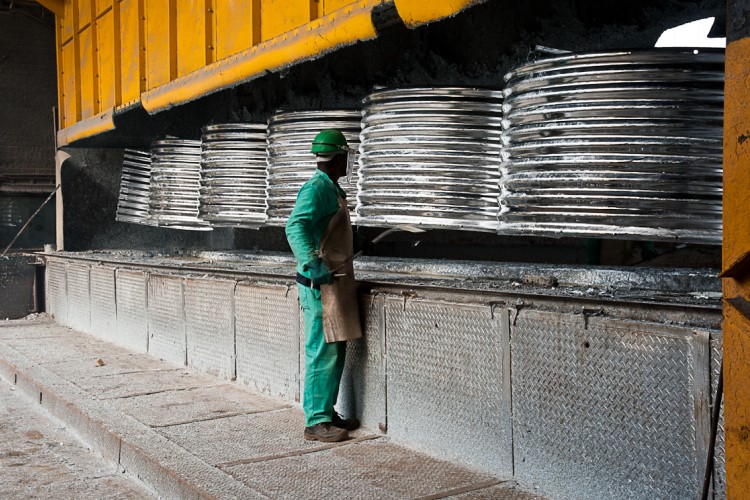Galvanisation is a method used for coating metal to protect it against corrosion. The surface is covered with a thin layer of zinc. The underlying metal surface is shielded against the environment and only the zinc is exposed to the atmosphere. Once galvanised, the surface does not have to be painted; in fact, the silver sheen of galvanised metal is the zinc coating.
Why Galvanisation
Applying a zinc coat helps protect the underlying steel surface against exposure to oxygen. Steel corrodes when exposed to oxygen and, as such, the zinc coating prolongs the life of steel. Galvanisation makes it possible to use mild steel in construction applications as a more cost-effective alternative to aluminium or stainless steel.
How Galvanisation Protects
The underlying steel is protected from the elements through a shield of zinc that prevents moisture and oxygen from coming in contact with the steel and cause corrosion. Even if the zinc coat is scratched, it still provides protection to the underlying steel.
How the Galvanisation Process Works
Various types of galvanisation are used. The hot-dip process entails dipping the base metal in a bath of molten zinc. The base metal is cleaned before the dipping process to ensure the zinc bonds with the metal’s surface. The base metal is also fluxed, which helps to remove any residue that may have remained after cleaning. Once thoroughly clean, the metal is dipped in the molten zinc, which bonds with it and creates a protective coat. The hot-dip method is widely used because it is economical, fast, and is suitable for complex metal shapes.
Pre-galvanisation is another method used at the steel plant to coat metals that are already in a particular shape. The process entails rolling a metal sheet through the cleaning agents and then putting it through a bath of hot, molten zinc, whereafter it is recoiled. This method makes it possible to protect large coils of steel and to ensure a coating with a good consistency. It also has the advantage of being an exceptionally fast process, but once the sheet coil is cut, the steel corrodes at the exposed edges.
A third method is electrogalvanisation, whereby zinc ions in an electrolyte solution are transferred to the base metal through an electric current. The method is usually applied to metal shields. The method provides a uniform coat, but the coat is thinner than the hot-dip coat and does thus not offer the same level of protection against corrosion.
Armco Superlite provide a full range of hot-dip galvanised steel products to the construction, engineering, road-building, and mining industries in South Africa.

